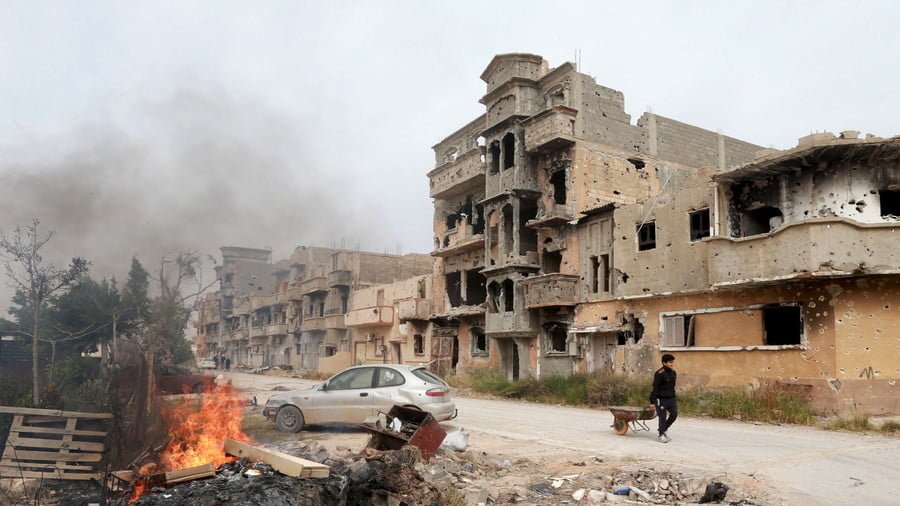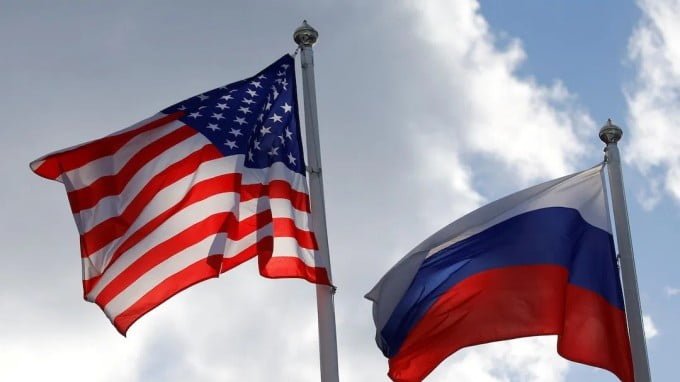Poland’s Planned Absorption of Millions of Ukrainian Refugees Has Ulterior Motives
Poland seems to have subtly shifted back to promoting Pilsudski’s Jagiellonian Concept of restoring the country’s historical ethnic and religious diversity in an attempt to make it a more regionally appealing pole of influence in Central & Eastern Europe.
Polish Deputy Interior Minister Maciej Wasik said earlier this month that up to one million Ukrainian refugees might flood into his country in the event that hostilities break out between Kiev and Moscow as a result of the undeclared US–provoked missile crisis in Europe. Unlike those few dozen thousands of civilizationally dissimilar individuals who tried to illegally enter Poland from Belarus last year, Wasik said that Warsaw would recognize these Ukrainians as “real refugees” and “we absolutely won’t say no to helping them.”
This is a major commitment to make considering that unnamed US sources reportedly warned earlier this month that any Russian-Ukrainian hot conflict “could also result in one million to five million refugees, with many of them pouring into Poland.” It’s the sovereign choice of the Polish government who to consider “real refugees” but the aspiring Central & Eastern European leader might nevertheless have ulterior motives for its planned absorption of that many Ukrainians. Instead of being a purely “humanitarian” gesture, it might be driven by tacit geostrategic calculations.
To explain, Poland envisions itself leading what it calls the “Three Seas Initiative” (3SI) covering all of the EU members east of the former Iron Curtain and between the Adriatic, Baltic, and Black Seas. It also created the “Lublin Triangle” alongside Lithuania and Ukraine in summer 2020 to serve as the core of this initiative, with Kiev being an informal member of the 3SI in spite of not being part of the EU. Ukraine is included in this Polish-led regional integration platform because Warsaw has historically regarded it as falling within its “sphere of influence”. Both of their governments are also fiercely anti-Russian.
There have been two schools of thought regarding Poland’s regional geostrategic aims since it regained independence in 1918 following 123 years of tripartite occupation by neighboring imperial powers. Jozef Pilsudski’s Jagiellonian Concept competed with Roman Dmowski’s Piast Concept during the interwar period. The former envisioned recreating Poland’s multicultural and polyconfessional “sphere of influence” in the east over Belarus, Lithuania, and Ukraine while the latter focused more on regaining formerly Polish-inhabited lands in the west in order to strengthen ethnic and religious homogeneity.
These concepts merged for the most part after the downfall of communism in Poland in 1989 whereby Warsaw continued focusing on its newfound post-World War II domestic homogeneity while simultaneously seeking to expand its influence eastward into those three earlier mentioned former Soviet Republics. This policy evolved after the Western-backed coup in Kiev in February 2014 that followed the spree of urban terrorism popularly described as “EuroMaidan” over the past few months prior. Poland then began absorbing large amounts of Ukrainian economic migrants.
There are now an estimated two million of them in that neighboring country. It should be remembered that Poland’s roughly 38 million people are 96.9% ethnically Polish according to the CIA World Factbook citing the results of its 2011 census. If two million of the by-then 40 million total people nowadays living in Poland are ethnic Ukrainians, then that makes the latter the country’s most significant minority at 5% of the population. Add to it another one million potential refugees who’d likely permanently resettle in that civilizationally similar country, then Ukrainians would constitute 7.3% of all people in Poland.
For comparison, the CIA World Factbook cited the 2011 census as estimating that Ukrainians were only 0.1% of the total population that year so their newfound numbers represent the unprecedented grwoth of this minority group even in the event that another one million of them don’t end up flooding into Poland. While these dynamics have caused some local socio-economic tensions, they also strategically benefit the host country by replacing Poles who emigrated elsewhere to the EU for economic reasons and can also eventually create a lobbying force for influencing Ukraine via its expats in Poland.
It’s that second element that could tacitly be driving Poland’s about-face on “refugees”. Unlike people from the Global South, Ukrainians – whether “real refugees” or just economic migrants – are much more civilizationally similar to Poles and can thus more easily assimilate and integrate into its society, albeit still imperfectly according to some accounts. Warsaw seems to have subtly shifted back to promoting Pilsudski’s Jagiellonian Concept of restoring the country’s historical ethnic and religious diversity in an attempt to make it a more regionally appealing pole of influence.
By attempting to gradually re-establish itself as a cosmopolitan country that embraces the minorities that used to live under the former Polish-Lithuanian Commonwealth and interwar Second Polish Republic (in spite of reports that some of them were mistreated as second-class citizens), contemporary Poland might hope to compete with Russia in the sphere of soft power all across the “borderlands” between them. Lithuania is already a lost cause for Moscow as is approximately half of Ukraine, though Belarus is solidly within its orbit but Warsaw has still cultivated strategic ties with its “opposition”.
What seems to be happening is that Poland is shedding its post-World War II ethno-religiously homogenous self-identification and “opening up” more to the people from the east, in particular Ukrainians, as part of its policy of envisioned regional leadership through the 3SI and its Lublin Triangle core. This will clearly remain a work in progress since it also necessitates changing many Poles’ perceptions of themselves, their country, and its identity that have been powerfully shaped by geopolitical forces beyond their control across the centuries.
In any case, it’s still a regional trend that deserves to be tracked, even if only to monitor the evolution of its primary Ukrainian policy. There’s no denying that Ukrainians have suddenly become Poland’s most important minority group by many orders of magnitude compared to their prior position in society just a decade ago and are thus poised to continue growing in influence. This, however, is less the result of Poland’s “humanitarian” policy of providing work and refuge for these neighboring people but is almost certainly part of a tacit geostrategic policy aimed at expanding its “sphere of influence”.







